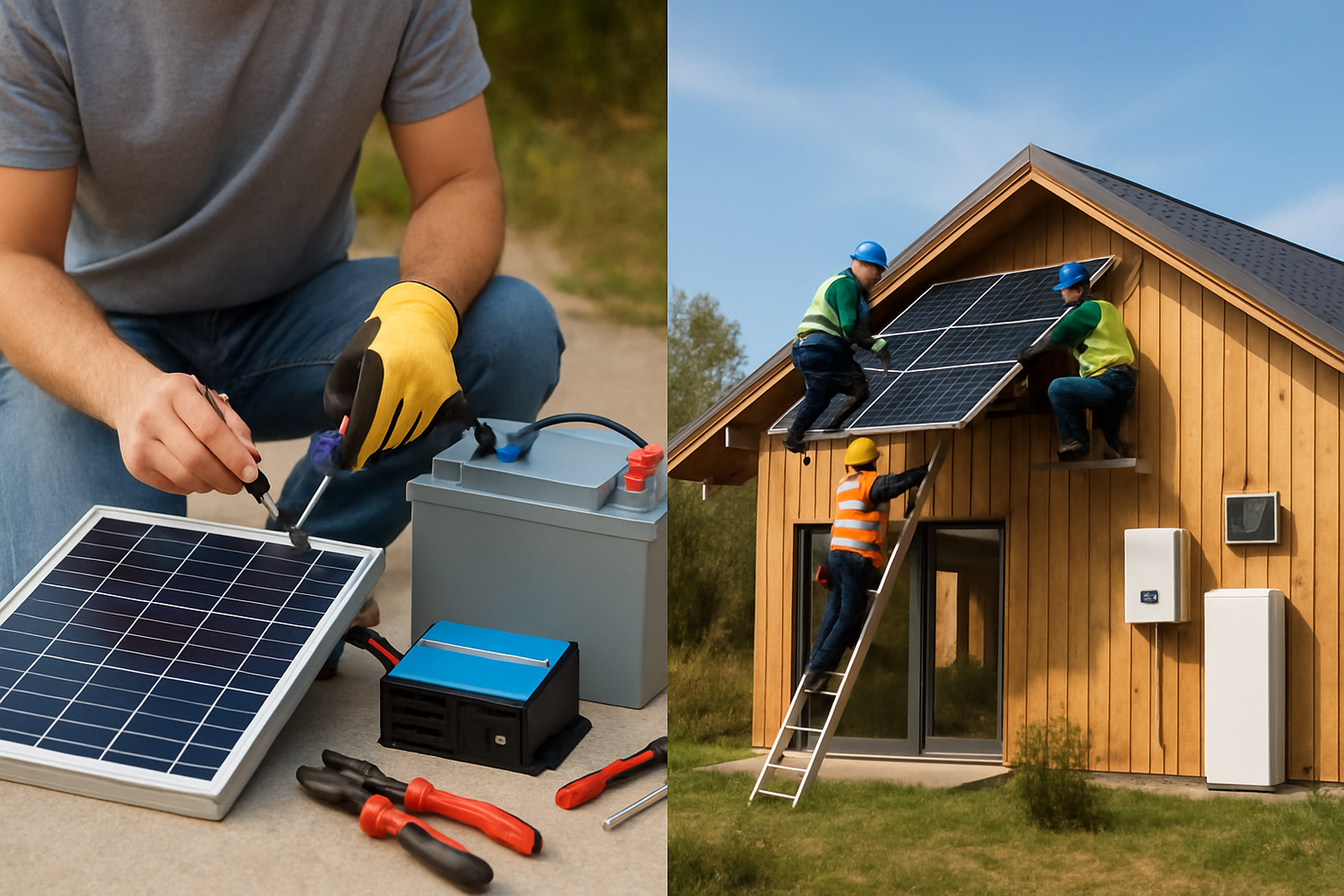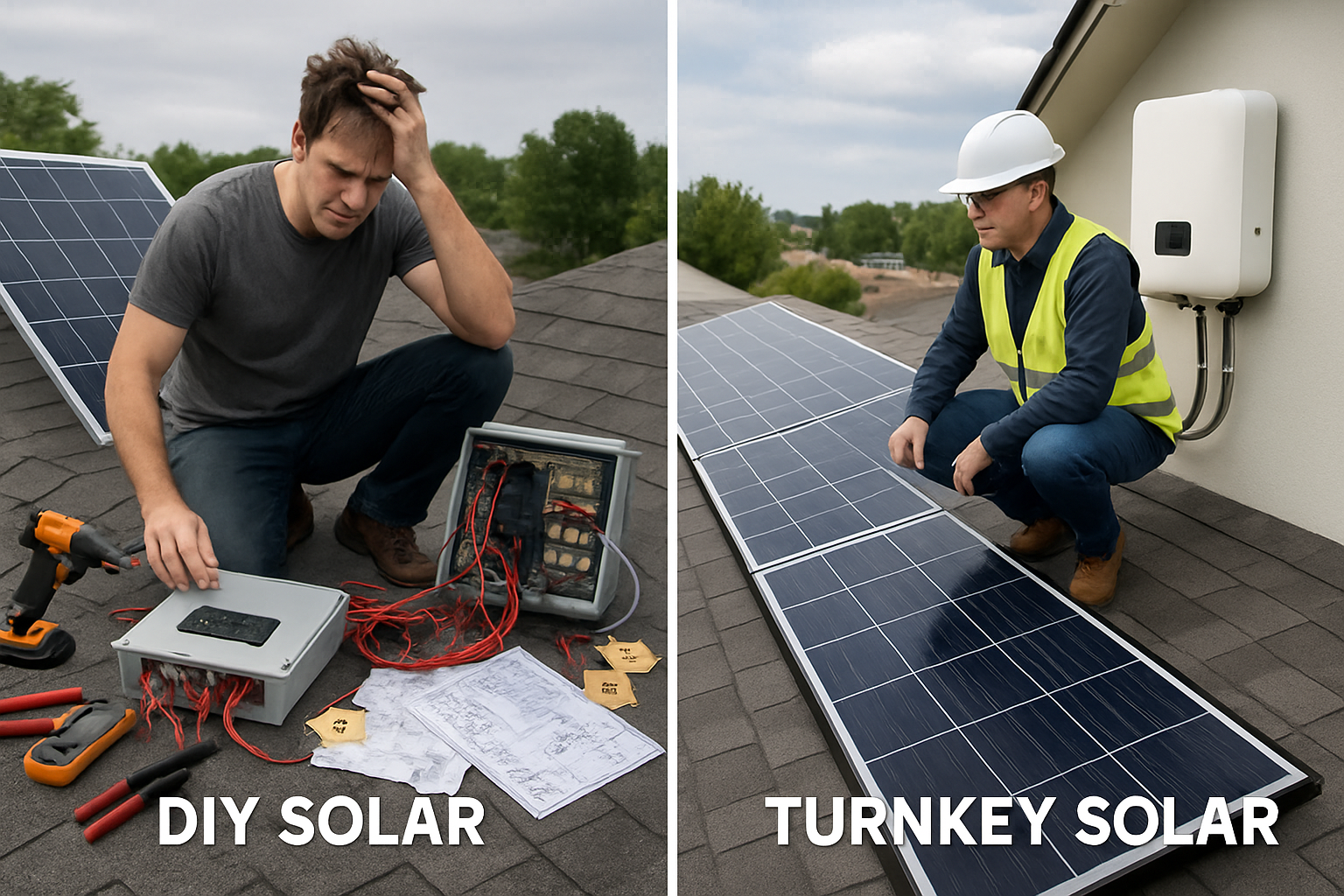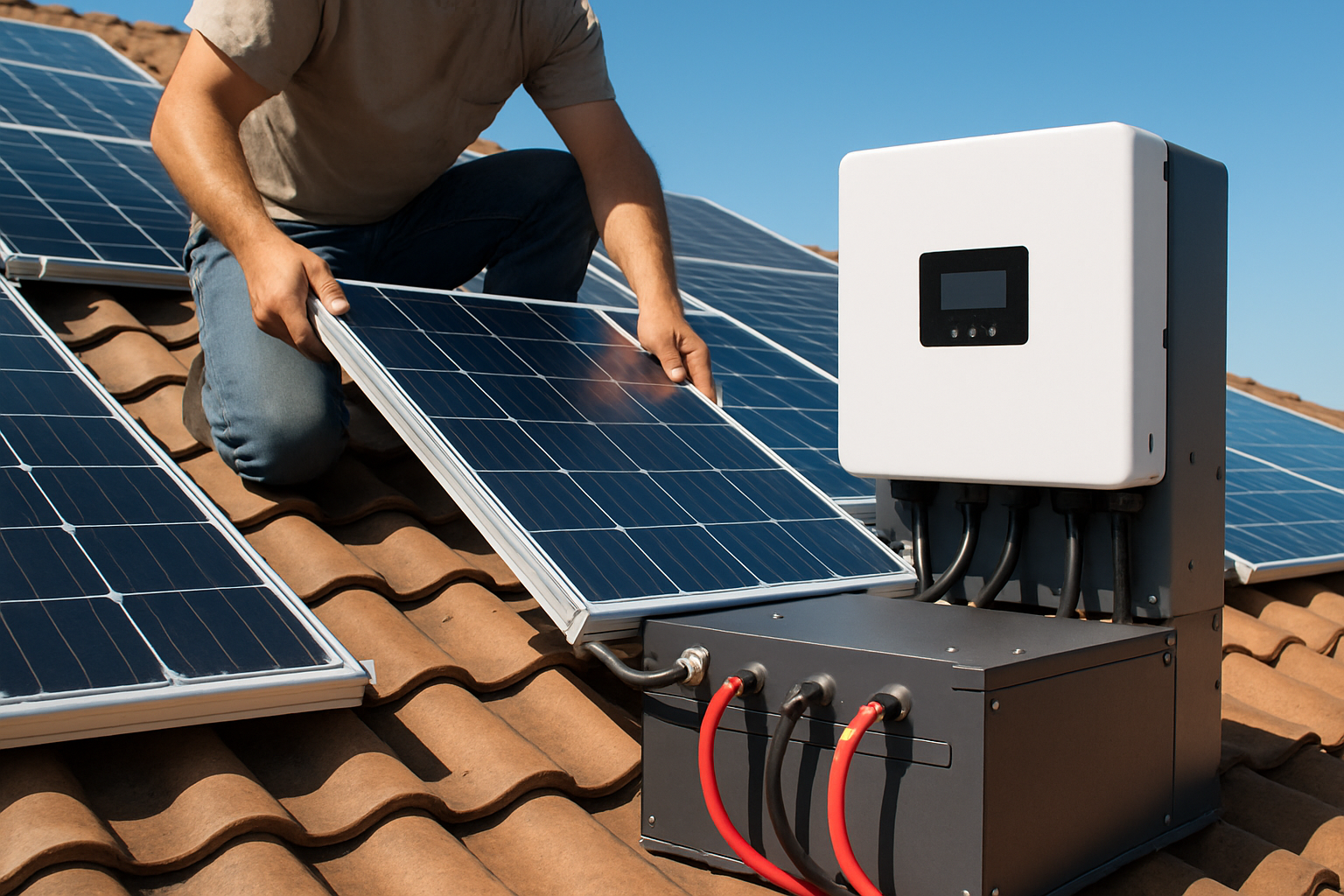Achieving energy independence through an off-grid solar system is an appealing prospect for many. You gain control over your power supply, reduce reliance on traditional utilities, and contribute to a sustainable future. As you consider this transition, a key decision emerges: should you build a Do-It-Yourself (DIY) system or opt for a comprehensive turnkey solution? This article examines the evolving price trends for both approaches in 2025, offering insights to help you make an informed choice for your off-grid aspirations.

DIY Off-Grid Systems: Costs and Considerations
Building your own off-grid system offers the potential for significant cost savings, primarily on labor. However, it demands a strong understanding of electrical systems, safety protocols, and component integration. You become the project manager, designer, and installer.
Component Costs: The Foundation of Your System
The core of any off-grid system includes solar panels, a charge controller, an inverter, and energy storage. Our company specializes in high-performance, safe, and reliable lithium iron phosphate (LiFePO4) batteries, which are a popular choice for their longevity and efficiency. Hybrid inverters, which convert DC power from solar panels and batteries into usable AC power, are also crucial.
Recent years have seen fluctuations in component prices. While solar PV modules experienced a roughly 20% price increase in early 2022 due to higher input costs for critical minerals and raw materials, these pressures have since eased. This suggests a more stable, or potentially slightly decreasing, cost environment for panels in 2025. According to the IEA's World Energy Investment 2023 report, global capital expenditure growth in solar PV and battery storage is on track for a Net Zero Emissions (NZE) scenario, indicating continued market maturity and potential for economies of scale.
When sourcing components, you will need to research various suppliers, compare specifications, and manage logistics. This can be time-consuming but allows for customization and potentially lower prices if you find good deals.
Labor and Expertise: Your Investment of Time and Skill
The primary saving in a DIY project comes from eliminating professional installation fees. However, this saving is offset by your investment of time, effort, and the need for specialized knowledge. Improper installation can lead to inefficiencies, safety hazards, and costly repairs. You will need to understand system sizing, wiring diagrams, grounding, and local electrical codes.
For example, correctly integrating a LiFePO4 battery bank with a hybrid inverter requires precise wiring and configuration to ensure optimal performance and battery longevity. Mistakes here can damage expensive equipment or compromise system safety.
Potential Savings and Risks
A successful DIY project can save you 20-40% on the total system cost compared to a turnkey solution, primarily from labor. However, this comes with inherent risks:
- Time Commitment: Designing, sourcing, and installing can take weeks or months.
- Technical Challenges: Troubleshooting complex electrical issues requires expertise.
- Safety Concerns: Working with high-voltage DC and AC power carries significant risks.
- Warranty Issues: Individual component warranties may not cover system-level failures due to improper installation.
- Permitting and Inspections: Navigating local regulations can be challenging.
Despite these challenges, the satisfaction of building your own robust off-grid system and gaining a deep understanding of its operation is a significant reward for many.
Turnkey Off-Grid Solutions: Pricing and Value
Turnkey solutions offer a complete, professionally managed package. A single provider handles everything from initial consultation and design to procurement, installation, and commissioning. This approach prioritizes convenience, reliability, and peace of mind.
Comprehensive Packages and Installation
Turnkey providers offer integrated systems, often featuring high-quality components like our advanced lithium batteries and robust solar inverters. They design the system to meet your specific energy needs, considering factors such as your location, energy consumption patterns, and future expansion possibilities. This ensures an optimized and efficient system from day one.
The installation is performed by certified professionals who adhere to industry standards and local codes. This minimizes the risk of errors and ensures the system operates safely and effectively. While the upfront cost is higher, it includes all aspects of the project, often with transparent pricing.
Long-Term Support and Warranties
A significant advantage of a turnkey solution is the comprehensive warranty and ongoing support. Reputable providers offer warranties that cover the entire system, not just individual components. This means if an issue arises, you have a single point of contact for resolution.
Our company, with years of experience in the solar industry, focuses on providing reliable and scalable energy solutions. We develop integrated ESS (Energy Storage System) solutions that combine lithium batteries, hybrid inverters, and solar panels, ensuring a cohesive and well-supported system for your home, farm, or cabin.
Post-installation services, such as monitoring, maintenance, and troubleshooting, are typically part of a turnkey package or available as an add-on. This ensures your system remains optimized and performs reliably for its entire lifespan.
Convenience vs. Cost
The convenience of a turnkey solution is undeniable. You avoid the complexities of system design, component sourcing, and hands-on installation. This saves you considerable time and effort. While the initial investment is higher, the long-term value often comes from:
- Professional Design: Optimized for efficiency and longevity.
- Guaranteed Performance: Systems are designed to meet specific output targets.
- Safety and Compliance: Installed to all relevant electrical and building codes.
- Comprehensive Warranties: Peace of mind with full system coverage.
- Expert Support: Access to technical assistance when needed.
For those who value reliability, safety, and a hassle-free experience, the additional cost of a turnkey system represents a worthwhile investment.
2025 Price Trends and Market Outlook
The off-grid solar and energy storage market is dynamic, influenced by global energy policies, technological advancements, and supply chain stability. Understanding these trends helps predict pricing for 2025.
Renewable Energy Investment Trends
The IEA's World Energy Investment 2023 report highlights considerable growth in clean power investment. To align with announced climate pledges, overall spending in generation, grids, and storage needs to rise by another 30% by 2030. This sustained investment indicates a robust market for renewable technologies, which can lead to further innovation and potentially more competitive pricing for off-grid components.
Specifically, investment growth in solar PV and battery storage leads the way toward a 1.5-degree stabilization scenario. This focus on key off-grid technologies bodes well for their continued development and cost optimization.
Technology Cost Evolution
The cost of renewable energy technologies, particularly solar PV and battery storage, has seen significant declines over the past decade. According to IRENA's Renewable Power Generation Costs in 2024 report, while plant-level solar and wind costs continue to fall, grid constraints are increasingly limiting their deployment. This suggests that off-grid solutions, which bypass some of these grid connection bottlenecks, may become even more attractive.
For residential-scale projects, the global average Levelized Cost of Electricity (LCOE) for installed systems moved from USD 300/MWh in 2015 to USD 180/MWh in 2021. The IEA's Medium-Term Renewable Energy Market Report 2016 noted that much lower values are expected in countries with low financing costs, ranging from USD 110/MWh to USD 140/MWh in 2021. This downward trend, even with recent material cost increases, points to increasingly affordable solar electricity.
Battery storage costs are also a critical factor. As manufacturing scales up and technology improves, the cost per kilowatt-hour for LiFePO4 batteries is expected to continue its long-term decline, making larger and more resilient off-grid systems more accessible.
Supply Chain and Inflation Impacts
Global supply chains experienced disruptions in recent years, affecting the availability and cost of components. However, efforts to diversify manufacturing and localize supply chains are underway. While the IEA noted that "prices for some key clean energy technologies rose in 2021 and 2022 thanks largely to higher input prices for critical minerals, semiconductors and bulk materials like steel and cement," these price pressures have since eased. This stabilization suggests that by 2025, the market should see more predictable pricing for solar and storage components.
Inflationary pressures can impact both DIY and turnkey costs, affecting raw material prices, shipping, and labor. However, the inherent cost-saving nature of solar energy, coupled with ongoing technological advancements, often helps mitigate these broader economic trends over the long term.
Choosing the Right Path for You
The decision between a DIY and a turnkey off-grid system depends on your individual circumstances, skills, and priorities.
Assessing Your Needs and Skills
Consider your technical aptitude. Do you have experience with electrical wiring, system design, and troubleshooting? Are you comfortable learning complex technical information and spending significant time on the project? If you possess these skills and enjoy hands-on work, a DIY approach could be rewarding and cost-effective.
If you lack technical expertise, have limited time, or prefer a hands-off approach, a turnkey solution provides the necessary professional support. This is particularly relevant for complex systems or if you prioritize maximum reliability and minimal personal involvement.
Financial Implications and Return on Investment
While DIY offers lower upfront costs, consider the value of your time and the potential for costly mistakes. A turnkey system, despite its higher initial price, often comes with guarantees and optimized performance that can lead to a faster and more reliable return on investment through consistent energy savings.
For example, a professionally installed system is likely to operate at peak efficiency, maximizing energy harvest from your solar panels and extending the lifespan of your LiFePO4 batteries. This translates to more consistent power and fewer unexpected expenses over the system's lifetime. (Disclaimer: This information is for educational purposes and not financial advice.)
Looking Ahead
The outlook for off-grid solar and energy storage remains positive. Continued innovation in battery technology, inverter efficiency, and solar panel performance will make off-grid living more accessible and affordable. As global investment in clean energy accelerates, we anticipate further cost reductions and enhanced reliability for both DIY components and integrated turnkey solutions. Your journey to energy independence is becoming increasingly viable, offering robust and scalable power for your home, farm, or remote cabin.
Frequently Asked Questions
What is the main difference between DIY and turnkey off-grid systems?
A DIY system involves you designing, sourcing, and installing all components yourself, saving on labor costs but requiring significant technical skill and time. A turnkey system is a complete package provided by a professional company, covering design, procurement, installation, and support, offering convenience and reliability at a higher upfront cost.
Are off-grid solar systems becoming more affordable?
Yes, generally. While there have been some recent price fluctuations due to supply chain issues, the long-term trend for solar panels and battery storage shows significant cost reductions. Continued investment in clean energy and technological advancements are expected to make off-grid solutions increasingly affordable and efficient in the coming years.
What are the benefits of using LiFePO4 batteries in an off-grid system?
LiFePO4 (lithium iron phosphate) batteries offer high performance, exceptional safety, and a long cycle life compared to other battery chemistries. They are a reliable and durable choice for off-grid energy storage, providing consistent power and requiring minimal maintenance, which is crucial for energy independence.
References
- IEA. (2023, May 28). World Energy Investment 2023.
- IRENA. (2025, July 22). Renewable Power Generation Costs in 2024.
- IEA. (2016, October 28). Medium-Term Renewable Energy Market Report 2016.





Leave a comment
All comments are moderated before being published.
This site is protected by hCaptcha and the hCaptcha Privacy Policy and Terms of Service apply.